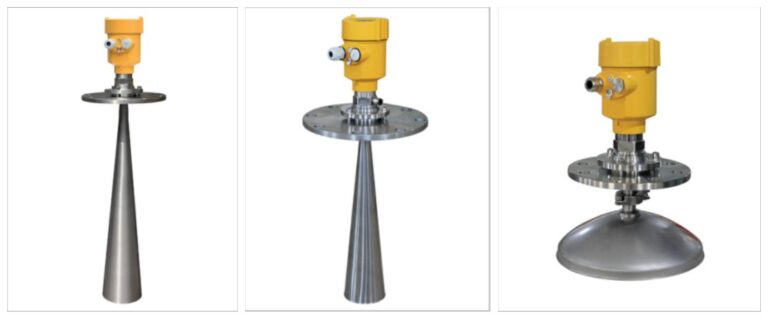Grain silos are facilities for storing large quantities of grain, and radar level meters are widely used in order to accurately monitor grain silo material levels.
This paper will introduce the material level characteristics of grain silos and provide two actual measurement cases to demonstrate the application of radar level meters in this area.

Grain bins are characterized by the following features: Large capacity: grain bins usually have a large capacity and are used to store large quantities of grain.
This large capacity allows for more efficient and continuous storage of grain.
Shallow height: Grain has a low density compared to other liquid or powdered materials, so grain silos usually have a large surface area and a relatively shallow height.
Variability: Grain is susceptible to changes in humidity, temperature, and pressure, resulting in changes in grain volume. This makes the monitoring of material levels require high accuracy and stability.
Dust and particulate matter: The handling and transportation of grain generates large amounts of dust and particulate matter, which can cause contamination and malfunction of sensors.

To understand the application of a radar level meter in the grain silo level measurement, the actual measurement cases are essential, this article shares with you two actual measurement cases.
The first in the grain processing industry, grain silo material level monitoring is critical.
Accurate level control can ensure the stability and efficiency of the production process.
Traditional level measurement methods such as pressure sensors and float gauges are limited by the variability of grain and susceptibility to particulate matter, and may not provide accurate and stable level measurements.
Radar level meters, on the other hand, provide non-contact level measurement by transmitting and receiving high-frequency electromagnetic waves. It can penetrate dust and particulate matter and accurately measure the level of grain in a grain bin.
By connecting with the data acquisition system, the operator can monitor and record the change of the material level in real-time, so as to adjust the inlet and outlet of the grain in the silo in time.

The second case is in the logistics and warehousing industry, where grain bin level monitoring is critical for inventory management and material supply.
With radar level meters, real-time monitoring and management of material levels in grain bins can be realized, which improves the efficiency and reliability of inventory management while ensuring the quality of grains.
By reducing the risk of manual intervention, it improves the intelligence of goods warehouse storage management. Utilizing the non-contact measurement principle of the radar level meter, the operator can obtain the level information stably and accurately.
This real-time data can be integrated with the inventory management system to achieve automated and digitalized warehouse inventory management, enabling more efficient management of inventory and improving the efficiency of logistics processes. Radar level meters have a wide range of applications in grain silo level measurement.
The characteristics of grain silos include large capacity, shallow height, variability, and dust particles, which pose many challenges for level monitoring.
And by using radar level meters, operators can monitor grain level changes in grain silos in real-time to ensure the efficiency and stability of production and warehouse management.
